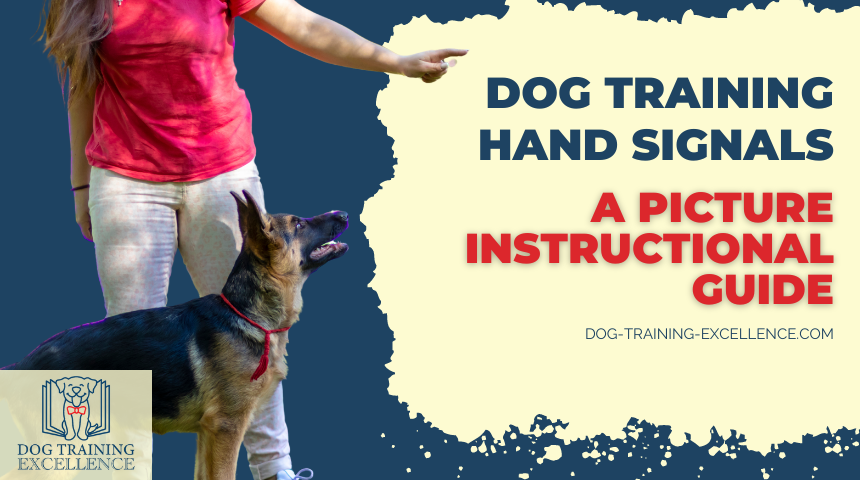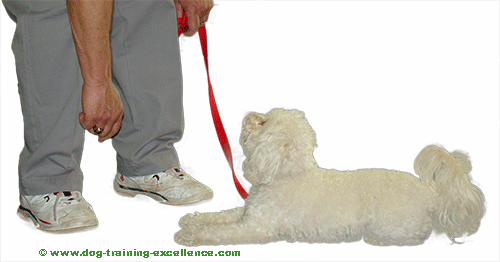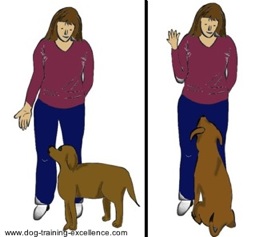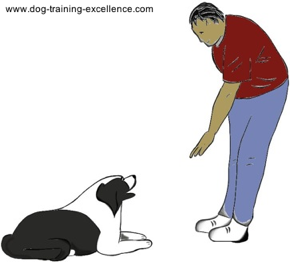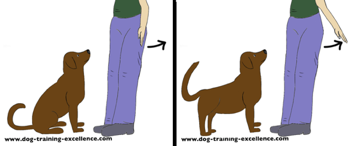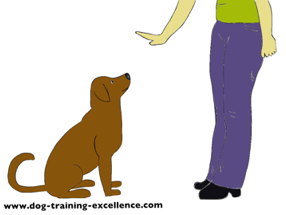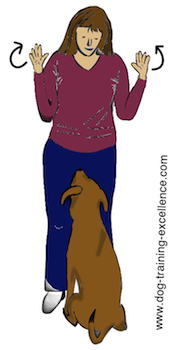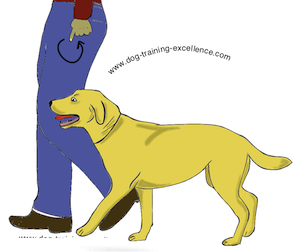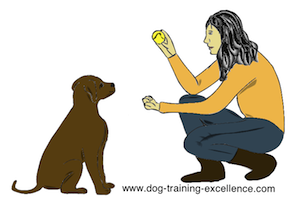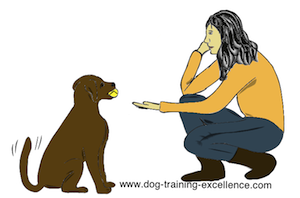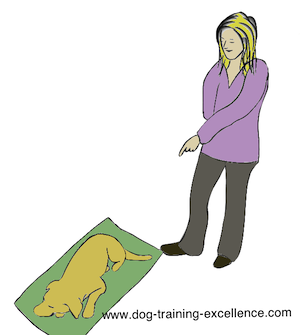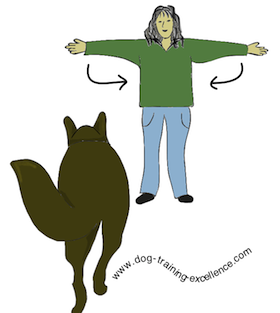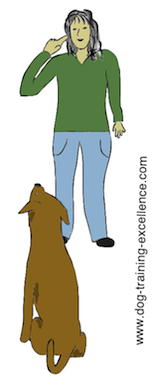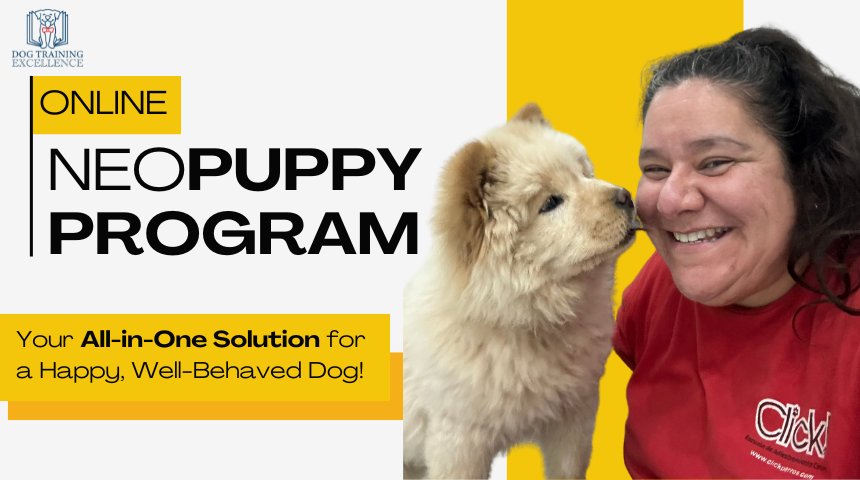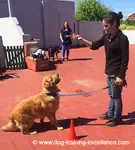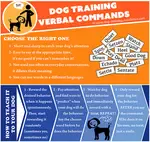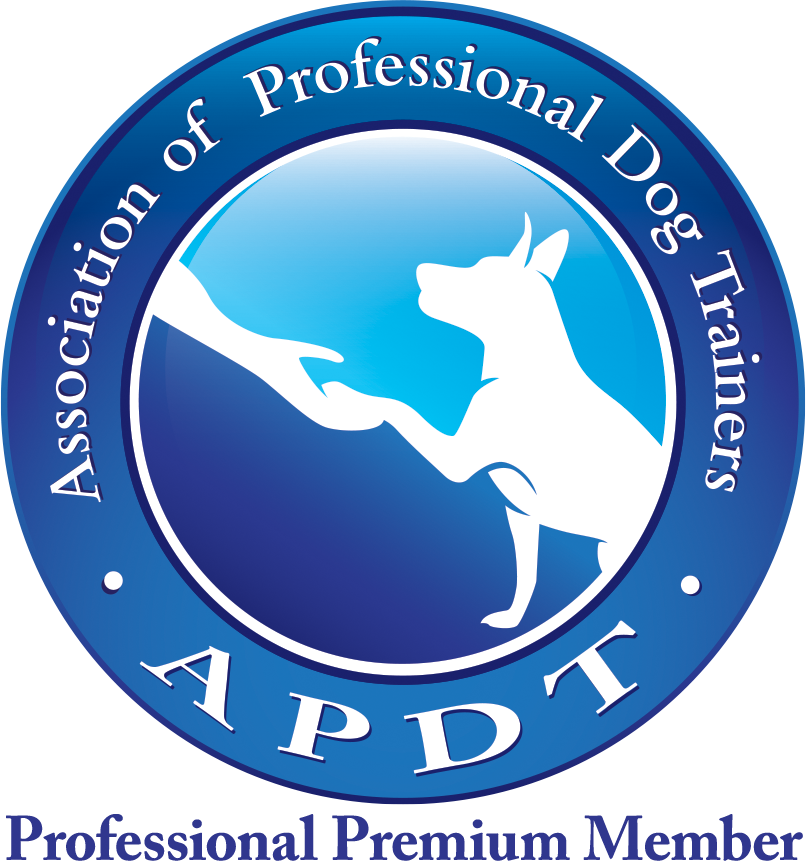I try to write my posts as unbiased as possible and recommend the products I consider to be useful and the best. I use affiliate links, this means that–at no extra cost to you–I can make a commission on a purchase you make after clicking on them. As an Amazon Associate I earn from qualifying purchases.
Dog Training Hand Signals
Train Like a Pro with free PDF
Dog training hand signals are very useful for several reasons: Canines are visually oriented animals and will understand hand signals for dogs very well. They can read your body language easier than understand your spoken words.
Article Highlights:
Usefulness of dog training hand signals
Some training methods use cues that can then become the actual hand signal! This makes an easy transition from getting the behavior going to putting it under the control of a dog training hand command.
Dog hand signals are a great tool to use with deaf dogs as well as in obedience competition where verbal commands might not be heard or are not allowed. It is easier for dogs to understand a hand signal than a verbal command (perhaps, with the exception of Border Collies).
It is another way to build communication and trust with your pet as well as to enhance his confidence. When a dog understands what he is being asked to do, he feels safer, because he knows what to do.
Trainer’s Toolkit - Before you start practicing, you’ll need:
Before you start practicing these commands, make sure you have the right tools. These are the same ones I use with my own dogs and clients every day, they’ll make training smoother, cleaner, and more fun.
✅ Clicker & Treat Pouch Combo:
I highly recommend these silicone treat pouches, they’re flexible, durable, and super easy to clean.
And trust me… after a few sessions with chicken or liver treats, you’ll really appreciate that!
👉 Check the latest price on Amazon
✅ Yummy (but Healthy) Training Treats:
Treats can make or break your session. If your dog’s food-motivated, lucky you! Any small treat works.
But if your pup needs something extra special for her hard work, these healthy training treats never disappoint.
👉 See my favorite treats on Amazon
Disclosure: As an Amazon Associate, I earn from qualifying purchases. I only recommend products I personally (or my clients) use and trust.
Common dog training hand signals
Although there are no official dog training hand signals, some hand signals for dog training are recognized by most professional trainers.
You will notice that most of these are universal hand signals because they derive from the visual cue used when training a particular behavior with a specific training method.
Dog training hand signals from Luring a dog behavior:
When you teach your furry friend basic obedience commands like sit, down, stand and heel using luring, you hold food in your palm. Then you move it around to make your pet do what you want him to do.
That palm movement can then be turned into an actual dog training hand signal!
Here are some examples (see pictures below):
Sit: you lure your pooch by moving the treat up from his nose to his forehead. This movement becomes a full motion with your palm facing up from your leg to your shoulder.
Down: you lure your pet by moving the treat from his nose down to the floor. This movement becomes a full motion with your palm facing out starting at your shoulder level (the last motion of the sit position) and going down to your leg palm-down.
Stand: Starting from a sit or down position, you lure your hound by moving the treat from his nose up and forward. This becomes a full motion with your palm starting relaxed at your hip, then move your arm backwards.
Heel: you lure your canine friend with a treat to walk next to you (usually on your left side). If your pet is coming from -in front- of you, then you lure him to go around you from right to left (in a half circle around you). This movement becomes a signal by moving your hand in a small circle near your hip or tapping your hip. If your pooch comes from behind you, then he should just appear on your left side.
Dog training hand signals from Target training:
When you use a target to prompt a behavior in your pet, most of the time you also make a hand movement that can later become a dog training hand signal.
Here are some examples (see pictures below):
Spin:
You will use the target in a circular motion above your dog to get him
to spin around. This will become a full motion of your hand doing a spin
in the air (less obvious).
Go to your crate: You will use the target to move your pet into the crate. Then point with the target. The pointing motion will become the visual signal for "go to..."
Free Dog Training Hand Signals Chart Download!
Sign up to "The Yes Dog" our Monthly e-newsletter and receive a FREE printable PDF list of 70+ dog training commands.
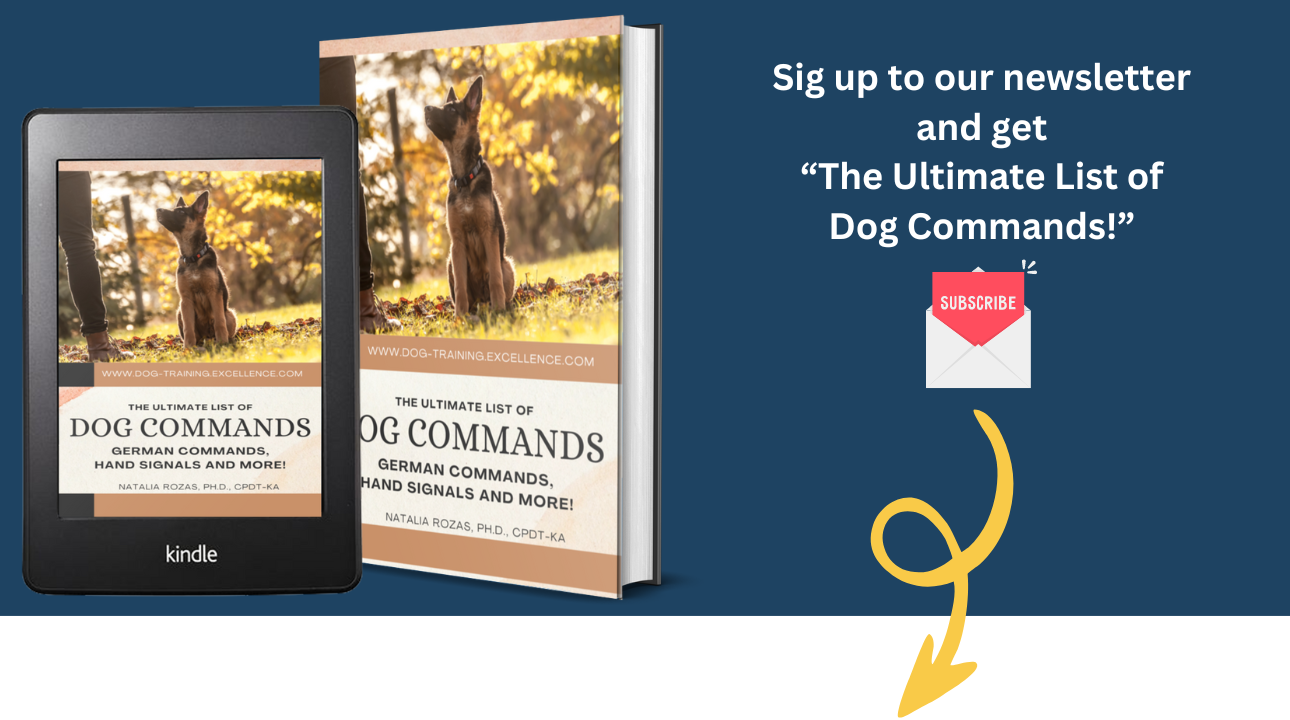
Sign up to The Yes Dog!

Our newsletter name ("The YES dog") was created to promote positive dog training methods (say -yes- instead of punishment) and the acronym also tells you what you will get into your inbox:
Yeehaw with your dog (find joy with fun activities)
Explore dog science (learn about your best friend)
Sayings that inspire (a quote to help you bond with your dog)
List of hand signals for dog training
Sit: Start palm-out at leg and moves up as if to touch your shoulder.
Down: Start palm-out at shoulder and moves down towards floor ending palm-down.
Stand: Start palm-out at the side of the hip and moves straight backwards (like an invitation to enter motion).
Stay: Palm-out stretch in front of dog.
A Simple Trick for Smoother Training
To teach your dog hand signals, practice in short sessions with breaks in between each session. Breaks are great to keep your dog happy and motivated througout training. Play, give him/her a toy, puzzle toy, or simple spend a few minutes relaxing and having a petting session before starting training again.
These are some of the toys I use with my dog Callisto during our training breaks. She loves to chase and play tug with her Kong Koala (I use this to keep her active and motivated). Other times I give her a puzzle toy like the Trixie puzzles to help her settle down while still keeping her brain active.
Kong Snuzzles KOALA
Kong toys are my favorite! The Kong Koala Snuzzles is the perfect size and shape for my dog, it has a squeaker inside and the ears crackle. It's perfect for playing a few minutes in between training sessions. |
Trixie Puzzle Level 2
If your dog is not a heavy chewer, puzzle toys are a great way to keep them entertained and using their brain too! I love Trixie toys because they are cheap but a great entertainment. Trixie Level 2 is one of my dog's favorite! |
Come: one (or two) arm out parallel to the floor, bring your hand to your chest.
Dog Trainer Tip:
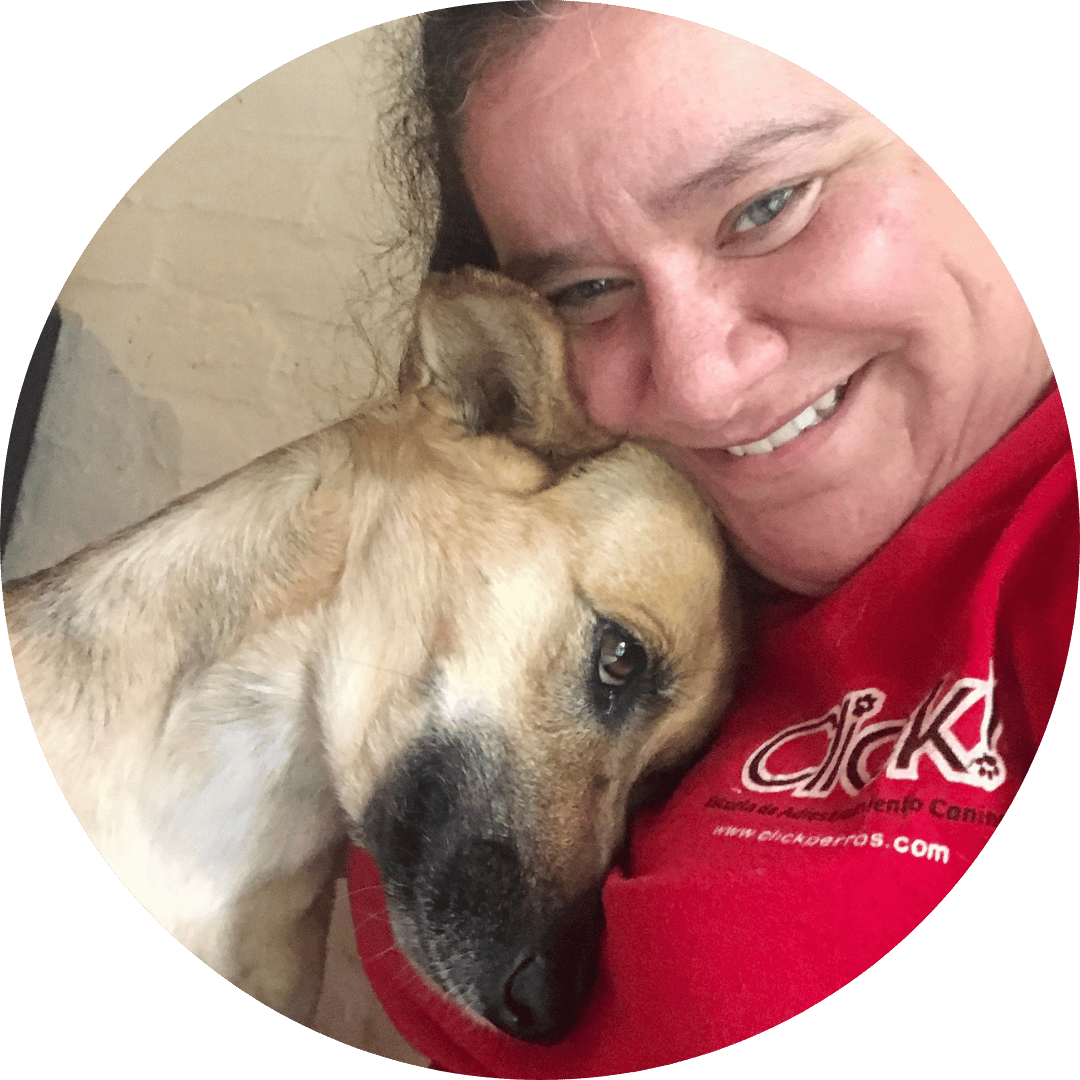
Remember, these are just suggestions for dog training hand signals, you can use any gesture or body movement that feels natural to you and is easy for your dog to recognize. What matters most is consistency and clarity.
If you already know some American Sign Language (ASL), you can even incorporate real signs into your dog’s training! Many ASL gestures work beautifully as dog cues because they’re clear, distinct, and designed to be understood visually.
Using a mix of gestures that feel intuitive to you, and easy for your dog to see, helps build better communication and strengthens your bond. After all, your dog doesn’t care what the signal looks like, only that it always means the same thing.
How to teach dog training hand commands
You will be applying the principles of Operant Conditioning!
A
behavior will happen more often if it is being rewarded. And your
command or cue should act as the "green light" for your pet to do the behavior
and get rewarded. There are different techniques to use, Luring is one of the most popular ones because the movement of the lure becomes the hand signal. However, you can teach a hand signal with any behavior.
Teaching a dog training hand signal from scratch
- Your dog should be doing the wanted behavior quite reliably. For example, he comes to you and sits (without you saying anything).
- Right before your dog is about to do the behavior, do the hand signal.
- Mark and reward your pet's next response.
- Repeat steps 2 and 3 several times!
- If your dog does the behavior without you doing the hand command first- Ignore it!
- Your puppy must be doing the behavior for you often during a training session
(this will happen if you reinforce the behavior a lot! - it's basic
positive reinforcement). You can also toss a treat further away to reset your dog and get him ready for the next repetition.
- Repeat steps 5-6 until he is only responding after you do the dog training hand signal.
- Once you and your pet are communicating very well, you can start making the hand signals less and less obvious, your dog will still be able to catch them!
- Now move on to the next signal!
Teaching a dog training hand signal from a verbal one
- First do the hand signal.
- Immediately after say the verbal command (that your pooch already knows).
- Mark and reward your dog's response.
- Repeat steps 1-3 several times!
- Now try the dog hand signal but don't say the verbal cue.
- If he responds - Mark and reward!
- If he doesn't respond to your hand signal be patient and repeat steps 1-4 again until successful.
The test!
You want to test your dog every so often to see if he is really learning to discriminate:
- Between different hand signals
- Between verbal and hand cues
1. Can your dog discriminate between two or more hand signals?
During a training session, ask your dog to do one behavior (cue 1) and then another one (cue 2). Repeat 5 times. Reward your dog for good responses and ignore incorrect ones (no need to punish, no need to say "No", nothing). How many correct ones did your dog do? If 3 or less, you need to keep practicing!
If you are only teaching your dog 2 cues, your dog may be guessing instead of paying attention to the cue. He knows that after sit comes down, after down comes sit...there are no other possibilities.
Teach your dog 3 or more cues in separate session, then start mixing them up randomly so he can't guess what is coming next. Once your dog reliably responds to these cues randomly he is ready to move on to distractions!
2. Is your dog really responding to your hand signal?
We, humans, like to throw around a very big quantity of signals when we communicate with each other. We make sounds (talk), make facial gestures, gesticulate with our hands and arms, and maybe even move around while communicating. What is your dog using as a cue? Your voice? Your facial expression? Your hand signal? Your whole body movement? O combination of all?
This is when you want to test your dog to see if he has learn the cue signal you chose (and not some other random movement you are accidentally making without realizing it!).
Get ready for a dog training hand signal training session with treats. Ask your dog to do one behavior (cue 1) 5 times in a row. Reward your dog for good responses and smile or ignore your dog for incorrect responses. IMPORTANT: make sure you stay still, do not make facial expressions, do NOT talk (some people can't help it!), and do not move around. JUST DO THE HAND SIGNAL ONLY.
You can videotape yourself to see if you can find extra signals you are giving your dog (that may confuse him later on when you don't make them).
Dog training hand signals goes both ways! Your dog is learning...but you are learning too!
Case Study: Moon
When does my dog know a cue?
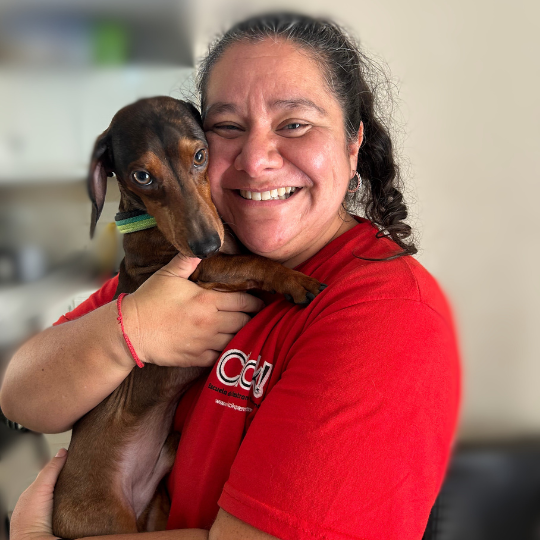
Moon's mom started learning about dog training hand signals with me, she was following the steps and practicing with Moon every day. During one of the classes she told me that Moon did not respond to her hand signal a few times that week. So, I asked her to do a signal test (5 repetitions) so I could see what was going on. Moon responded perfectly 5 out 5!
Ok, in what situations was Moon having problems? She told me it was usually when they were at the park. Ahhhhh!
Dogs are very smart, but not as smart as adult humans. When you practice a lot with your dog in a single situation, your dog will only be able to understand you in that particular situation. New and different situations will be very hard to understand.
What can you do? Practice! Always start practicing with your dog in an easy, distraction-free environment. Once your dog is getting it, start practicing in situations that are progressively more challenging. Do not go from the living room of your home to the park, this is too big of a jump. Practive in other areas of the house, with guests, in the yeard, etc.
Frequently Asked Questions About dog training hand signals
Are there universal hand signals for dog training?
Are there universal hand signals for dog training?
Not really. You can teach your dog ANY type of hand signal to mean whatever cue you want. The most popular hand signals come from the movement of your hand when teaching with the luring technique. But I use the signal "All done" from ASL with my dog to mean something is over (Free), so you can get inspiration from ASL too. The key is to follow the steps above to teach your dog to understand it.
Can dogs understand 250 hand gestures?
Can dogs understand 250 hand gestures?
There are a few dogs that have learned over 200 cues. Most of them are border collies and have had a LOT of training. You can check out the Genius Dog Challenge to learn more about these dogs and their learning journey.
Do dogs respond better to hand signals?
Do dogs respond better to hand signals?
In general yes, they do. Dogs are visual animals and communicate better with body signal, so they understand body/hand cues better as well. If you teach your dog 1 or 2 cues, it won't matter, your dog will be able to distinguish and be able to respond correctly. However, once you start teaching your dog more than 3 words, it becomes very hard for them to distinguish them and a LOT of training is required (not impossible just a lot). If you use hand signals, you can teach more cues to your dog in a shorter period of time. One exception to this rule are Border collies, who are masters at discriminating different sounds and learning word very quickly.
My dog gets confused with hand signals, what do I do?
My dog gets confused with hand signals, what do I do?
A common reason for dog getting confused with hand signals is that you are not being consistent and clear or you did not choose a good hand signal. If you taught your dog 2 or more hand signals, make sure these are very different from each other. Reward your dog for responding correctly ONLY, if your dog makes a mistakes, just smile, take a deep breath and start over. It's all about practice and consistency.
Enjoy your pet!
In conclusion, teaching dog training hand signals lays
the foundation for a better communication and loving relationship with your pooch.
To summarize the key takeaways:
- Plan your training sessions and choose which method you will use.
- Think about a hand signal that works for you and your dog. If it comes naturally from the training method used even better!
- Use positive reinforcement to encourage desired behavior. Praise, treats, and affection are the best way to have a dog you can trust in.
- Adapt to your dog's unique needs. Every dog is different, and you may need to adjust your training to suit their personality and quirks.
- Dog hand cues can be used for every dog but are specially important for deaf dogs (that can also be trained!).
Dog training hand signals may have its challenges, but the reward of a well-trained, well-adjusted, and happy pet is more than worth it.
Remember
that your dog's success is also your success. Have fun with each step and cherish the moments as you watch your dog start learning and understanding what you ask.
Ready to Train Your Puppy the Smart Way?
I’m Dr. Natalia Rozas, Certified Professional Dog Trainer and Neuroscientist.
The NeoPuppy Program combines 80+ short videos and 4 online private coaching sessions so you can train your puppy effectively and kindly, backed by science.
✅ Train at your own pace
✅ Personalized online guidance
✅ Results without stress or punishment
👉 Explore the NeoPuppy Program
This article was updated by Natalia Rozas, Ph.D. and Certified Professional Dog Trainer (CPDT-KA #4071465) on March 17th, 2024. The case studies and anecdotes are real but to protect the privacy of our clients the names and details are changed.
- Home
- Training Methods
- Dog Training Hand Signals
